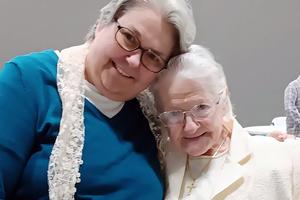Ben-Hur’s Reboot
New film features larger speaking role for Christ and stronger faith focus.

On Aug. 19, the Christian tale gets a reboot from Paramount Pictures and Metro-Goldwyn-Mayer.
The big-budget epic stars Jack Huston as Judah Ben-Hur, a wealthy Jewish prince betrayed into slavery by his close friend Messala (Toby Kebbell).
The film is set during the life of Christ, with much of the action occurring in Jerusalem; Christ makes providential appearances during Judah’s life — and, through his words and actions, makes a powerful impact on the young prince.
The film is based on the 1880 novel by Lew Wallace, a retired Civil War Union general. Wallace’s novel was a best-seller in the 19th century and has been brought to the big screen multiple times, beginning in 1907. The best-known and most-celebrated version was the Heston film, which garnered a then-record 11 Academy Awards.
In preparation for the release of the film, the Register spoke with some of the talent who brought the production to the big screen.
While the 2016 film follows the general story line of the 1959 version, it also has some key differences.
These include an expanded speaking role for Christ (Rodrigo Santoro) and a stronger Christian message. The message comes through the influence of the executive producers, husband-and-wife team Mark Burnett and Roma Downey.
As Burnett said, “If we told younger, secular Americans that we were making a movie about Christian love and forgiveness, they wouldn’t come see it. But if we tell them we’ve made an exciting action film with some great stars, they’ll come and be exposed to the message as well.”
It may be a fresh approach to the classic, but Timur Bekmambetov was initially reluctant to direct Ben-Hur. He agreed to because “it is unusual in Hollywood to have a film with both a good message and exciting action sequences.”
“The 1959 version is a great movie, but outdated,” he added. “Also, you find the theme of forgiveness in European movies, but not so much in America. It is time to tell the story again.”
Jack Huston comes from a notable cinematic family. His great-grandfather was the notable character actor Walter Huston (The Treasure of the Sierra Madre), his grandfather was the iconic, Academy Award-winning director John Huston, and his aunt is Oscar-winning actress Anjelica Huston. He found playing Judah taxing and, at times, frightening. Recalling the scene on a sinking galley ship, he recalled, “It was scary; we were working in an enclosed space. It really helps portray the idea in the movie: If the ship sinks, you go down with it.”
Bekmambetov said, “The trick was to portray it as a scary movie scene, rather than an action scene. Judah wants to survive the shipwreck so he can go kill Messala.”
As Huston said of his participation, “It was one of the great experiences of my life.”
Another significant difference in the 2016 version is an expanded version for Sheik Ilderim, played by Morgan Freeman. Freeman’s character (played by Hugh Griffith in the 1959 movie) is Judah’s mentor and friend. Huston said of Freeman, “He’s a consummate professional and brought so much to the production.”
Another enlarged role in the 2016 film is that of Judah’s wife, Esther (Nazanin Boniadi), who becomes a follower of Christ. “She was our way of bringing a religious aspect into Judah’s journey,” Bekmambetov said.
“Timur made the women in the film more relatable to a modern audience,” Boniadi said. “I love Esther’s evolution, going from the role of a servant to an outspoken voice advocating for what she believes in.”
For the film’s signature action scene, the chariot race, Huston and Kebbell experienced horsemen, had to adapt their skills.
“I used to race motorcycles, but nothing compares to chariot racing,” Kebbell said.
The race involved 40 days of live shooting at a track in Italy.
Phil Neilson, second unit director, said, “It was a dangerous, scary environment. We had all those horses and tons of metal [chariots] flying around the track.”
Costume designer Varya Avdyushko noted that 120 people were involved in designing wardrobe for the production. “We had a big army creating costumes for another big army,” she said, noting that various ethnicities were highlighted in the chariot race.
She added that the wardrobe department was able to secure some Roman costumes from the 1959 version, which were used by spectators during the chariot race: “It was our way of tying the new to the old and honoring the previous production.”
The filmmakers are optimistic about the film’s chances for success in the marketplace, believing it will draw a diverse audience.
As Burnett said, “It is a beautiful story with a powerful Christian message of love and forgiveness. We believe it’s something people will be willing to pay to see.”
Jim Graves writes from
Newport Beach, California.
















